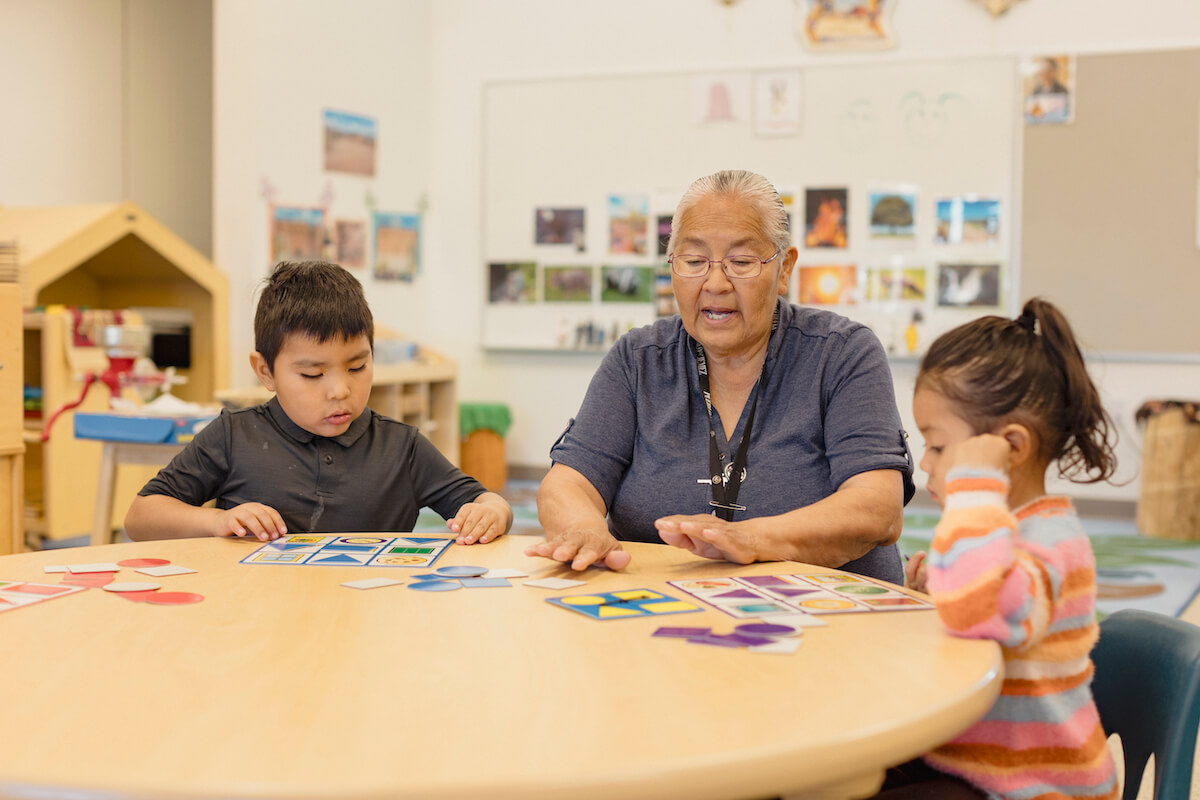Appointment of New Executive Director of Safety for Oakland Unified School District
The Oakland Unified School District (OUSD) has appointed Nelson Alegria as the new Executive Director of Safety ahead of the new school year commencing August 11th. Mr. Alegria is tasked with the continued implementation of the district’s Safety Plan, a strategic initiative deeply intertwined with several United Nations Sustainable Development Goals (SDGs).
Strategic Alignment with Sustainable Development Goals (SDGs)
The district’s approach to safety reform is a direct effort to advance key SDGs, creating a holistic framework for student and community well-being.
SDG 16: Peace, Justice and Strong Institutions
OUSD’s primary safety strategy reflects a commitment to SDG 16 by transforming its institutions to be more peaceful and just. The removal of the district police department, following the George Floyd Resolution, marks a significant shift from a law enforcement-centric model to a community-based, restorative justice approach. Mr. Alegria’s mandate to rework frameworks for mental health and restorative justice aims to build safer, more inclusive school environments, directly contributing to the goal of reducing violence and promoting justice.
SDG 10: Reduced Inequalities
The initiative actively addresses SDG 10 by seeking to rectify systemic inequities. Community partners, such as the Black Organizing Project, emphasize the need for the new safety plan to create systems that reduce suspension and expulsion rates, which disproportionately impact Black students. This focus on equitable outcomes is central to the George Floyd Resolution’s intent.
SDG 4: Quality Education & SDG 3: Good Health and Well-being
A secure learning environment is a prerequisite for achieving SDG 4. The safety plan’s objective is to establish a sanctuary for students, ensuring their physical safety and mental well-being (SDG 3), which allows them to fully engage in educational opportunities. The data indicating that 14% of law enforcement calls relate to mental health crises underscores the importance of integrating well-being support into the district’s safety protocols.
Mandate and Key Priorities
Mr. Alegria’s role is defined by a set of immediate and long-term objectives designed to institutionalize the new safety model.
Initial 90-Day Plan
- Conduct a comprehensive assessment of all school sites within the district.
- Engage with key community stakeholders and partners.
Core Responsibilities
- Oversee the continued evolution of the district Safety Plan.
- Strengthen community partnerships, particularly with the Black Organizing Project.
- Analyze past incidents, such as those at King Estate Campus and Skyline High School, to improve safety protocols and practices.
- Foster a culture of safety that prioritizes violence prevention and restorative measures over punitive action.
Analysis of District Safety Data
Data collected since the policy change indicates a complex safety landscape.
Call Volume Trends
Since the elimination of the district police department in 2021, calls for police service have seen a significant reduction, dropping from approximately 2,000 per year to roughly 250 per year.
Breakdown of Law Enforcement Calls (2024-2025 School Year)
Despite the overall decrease, a notable portion of incidents still require external intervention. Of calls made during the 2024-2025 school year:
- 37% required a law enforcement response.
- 22% were official reports to police, Child Protective Services, or for missing persons.
- 15% involved escalated adults, primarily off-campus individuals.
- 14% were related to mental health crises.
- 14% involved weapons in the community or on campus.
Stakeholder Perspectives and Community Engagement
The Black Organizing Project
The Black Organizing Project, a key advocate for the removal of police from campuses, views the appointment with cautious optimism. Executive Director Malaika Parker stated that while Mr. Alegria’s words are encouraging, the community expects decisive action. The organization urges the district to accelerate the implementation of the George Floyd Resolution to build robust systems for violence prevention and equity.
Commitment to Community Partnership
Mr. Alegria has affirmed that a top priority is continuing the community partnerships established by the district. He plans to ensure transparency and responsiveness, in line with SDG 16.7, by actively participating in school board meetings, PTA meetings, and other community events to hear directly from parents and residents.
Which SDGs are addressed or connected to the issues highlighted in the article?
-
SDG 4: Quality Education
The article’s central theme is creating a safe and effective learning environment within the Oakland Unified School District. This is a fundamental component of quality education, as students cannot learn effectively if they do not feel safe. The article mentions the goal is to “make families feel safe to send their kids to school” and to create a “sanctuary and true safety for students,” which directly supports the provision of quality education.
-
SDG 16: Peace, Justice and Strong Institutions
This goal is relevant due to the article’s focus on reforming the school district’s safety and justice systems. The discussion revolves around the removal of the district police department, the implementation of “restorative justice,” and the goal of “violence prevention.” The article highlights a shift from a punitive, law-enforcement-based approach to a more community-oriented and restorative one, which involves building more peaceful and just institutions within the school system.
-
SDG 10: Reduced Inequalities
The article explicitly addresses racial inequality. It mentions that the George Floyd Resolution prompted the removal of police from campuses and quotes the Black Organizing Project’s goal of “building systems and pathways for a reduction of suspension and expulsion which is primarily impacting black children.” This directly tackles the issue of reducing inequalities in educational outcomes for a specific racial group.
-
SDG 3: Good Health and Well-being
The article connects school safety directly to student well-being. It notes that the new safety framework includes “how we handle mental health” and that 14% of calls to law enforcement were for a “mental health crisis.” This shows a clear recognition that ensuring student safety involves addressing and promoting mental health.
What specific targets under those SDGs can be identified based on the article’s content?
SDG 4: Quality Education
-
Target 4.a: Build and upgrade education facilities that are child, disability and gender sensitive and provide safe, non-violent, inclusive and effective learning environments for all.
The entire article is focused on this target. The appointment of a new Executive Director of Safety, the implementation of a district Safety Plan, and the response to shooting incidents are all measures aimed at providing a “safe, non-violent… and effective learning environment.” The goal of creating a “sanctuary and true safety for students” is a direct articulation of this target.
SDG 16: Peace, Justice and Strong Institutions
-
Target 16.1: Significantly reduce all forms of violence and related death rates everywhere.
This target is addressed through the district’s efforts to prevent violence following several severe incidents. The article mentions a fatal shooting at King Estate Campus and other shootings at Skyline High School, highlighting the urgent need to reduce violence on school grounds.
-
Target 16.2: End abuse, exploitation, trafficking and all forms of violence against and torture of children.
The school safety plan is fundamentally about protecting children from violence within the school environment. The incidents of shootings are a clear form of violence against children that the district is trying to end.
-
Target 16.7: Ensure responsive, inclusive, participatory and representative decision-making at all levels.
This is demonstrated by the new Director’s plan to “attend school board meetings, PTA meetings and events to hear from the community.” Furthermore, the article highlights the influential role of the “Black Organizing Project,” a community group that “spearheaded the movement to remove police from campuses,” showing participatory decision-making in action.
SDG 10: Reduced Inequalities
-
Target 10.3: Ensure equal opportunity and reduce inequalities of outcome, including by eliminating discriminatory… policies and practices…
This target is identified through the stated goal of achieving a “reduction of suspension and expulsion which is primarily impacting black children.” This is a direct effort to reduce an inequality of outcome by changing the district’s safety and disciplinary practices, which were perceived as discriminatory under the previous system involving a campus police department.
SDG 3: Good Health and Well-being
-
Target 3.4: …promote mental health and well-being.
The article specifies that the district’s new safety plan involves rethinking “how we handle mental health.” The data showing that 14% of law enforcement calls were for a “mental health crisis” underscores the district’s focus on promoting mental health as a key component of student safety and well-being.
Are there any indicators mentioned or implied in the article that can be used to measure progress towards the identified targets?
SDG 4: Quality Education
- Indicator for Target 4.a: The article provides several quantifiable indicators. The number of calls to law enforcement is a key metric, with the article noting a drop from “about 2,000 calls a year” to “roughly 250 per year” after the removal of the district police. A further breakdown of these calls is provided (e.g., “14% mental health crisis,” “14% weapons in community or on campus”), which can be used to track the nature of safety issues.
SDG 16: Peace, Justice and Strong Institutions
- Indicator for Target 16.1: The number of violent incidents, injuries, and deaths on campus serves as a direct indicator. The article mentions “a shooting killed one and injured five at King Estate Campus” and other shootings, which are baseline data points against which future progress can be measured. The percentage of calls related to weapons (14%) is also a relevant indicator.
SDG 10: Reduced Inequalities
- Indicator for Target 10.3: The article implies a key indicator: the rates of suspension and expulsion, disaggregated by race. The goal to achieve a “reduction of suspension and expulsion which is primarily impacting black children” means that tracking these specific rates is essential for measuring progress.
SDG 3: Good Health and Well-being
- Indicator for Target 3.4: The percentage of law enforcement calls related to mental health issues is a direct indicator mentioned in the article. The fact that “14% [of calls were for a] mental health crisis” provides a specific metric to monitor the prevalence of such incidents and the effectiveness of interventions.
SDGs, Targets, and Indicators Analysis
| SDGs | Targets | Indicators |
|---|---|---|
| SDG 4: Quality Education | 4.a: Provide safe, non-violent, inclusive and effective learning environments for all. |
|
| SDG 16: Peace, Justice and Strong Institutions |
16.1: Significantly reduce all forms of violence and related death rates everywhere.
16.7: Ensure responsive, inclusive, participatory and representative decision-making. |
|
| SDG 10: Reduced Inequalities | 10.3: Ensure equal opportunity and reduce inequalities of outcome by eliminating discriminatory practices. |
|
| SDG 3: Good Health and Well-being | 3.4: Promote mental health and well-being. |
|
Source: ktvu.com







